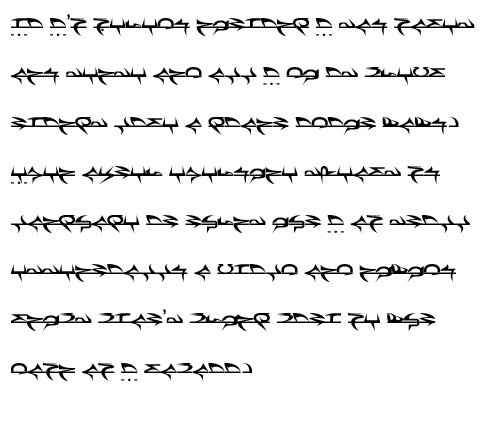Part 34: Part One - How To!
The time has finally come!
I’ve mentioned some of this stuff before, but I was a real spy nerd when I was a little girl. I’d take my bike to the library and come back just completely loaded with every book about spies, codes, and detectives that I could find in the kids’ nonfiction. Everything from hiding a message inside a disposable pen to how Enigma was cracked and back! Not too long after this phase, I got into video games.
Melnics was pretty obviously a code. I mean, making a whole language complete with vocabulary and syntax is a hell of a lot of work, more work than you’re going to put into a little bit of background for a video game. Easiest way to do it is to just make a font, like Wingdings, with symbols, and then just enter your damn dialogue normally.
Which meant, to young Cat, that it could be decoded. I saw myself down with a pen and paper and copied down all Meredy’s zany-ass speeches, and soon I’d cracked it. And I’m about to show you how!
Step One: Get Your Bearings
First of all, figure out what you’re dealing with. Identifying that you’re dealing with a substitution cipher is the first step to deciphering Melnics. A substitution cipher is any cipher that uses something else as a stand-in for the letters of the message – it could be numbers, symbols, or even other letters. (A code is an intelligible message where whole words stand for other words, like the classic “the eagle has landed”. A cipher is a message which has been rendered unintelligible using a predictable system, which the intended recipient knows how to reverse.)
Deciphering something like Melnics starts when you take a look at the overall form of the text. As you can see, the words seem to have been left intact, which will make things easy on us, and if there’s any punctuation, most of it is included in the symbol language. The message is 48 words long, which may look daunting, but it’s helpful. Law of averages; the longer a sample, the more likely it is to stick to the overall patterns of the language, like “e” being the most common letter.
The ciphers we’re working with here are simple substitution ciphers. That means that they’re encoded by substituting one letter for something else using a key that stays the same throughout the message. There are a lot of different codes out there; it’s a huge and super-interesting topic! This here is just the basics.
It helps to double-space the sample so that you can write your letters directly underneath. You guys ready to go?
Step Two: Know the Rules
The English language follows predictable patterns. When you know these patterns, you can use them to see through a cipher; they let you guess at letters, giving you a starting point for the rest of your reasoning. For example, the ten most common letters in English are E, T, O, N, A, I, R, S, and H. Of these, E is most common. So, when you see one letter more common than the others, you can guess that it might be E.
Here are some other handy guidelines!
- “The” is the most common three-letter word in English.
- The most common digrams, or pairs of two letters, are th, he, in, en, nt, re, er, an, ti, es, on, at, se, nd, or, ar, al, te, co, de, to, ra, et, ed, it, sa, em, and ro.
- The most common trigrams, or sets of three letters, are the, and, tha, ent, ing, ion, tio, for, nde, has, nce, edt, tis, oft, sth, and men.
- The most common letters at the start of a word are, in order, T, A, I, and S.
- The most common letters at the ends of words are, in order, E, S, D, and T.
- Here’s a list of the most common words in English!
Step Three: One Thing Leads to Another
”Sherlock Holmes” posted:
"Even now I was in considerable difficulty, but a happy thought put me in possession of several other letters. It occurred to me that if these appeals came, as I expected, from someone who had been intimate with the lady in her early life, a combination which contained two E's with three letters between might very well stand for the name 'ELSIE.'
Okay, so as you can see, we’ve got some handholds in the text. It’s all downhill from here! If you’ve guessed right based on the language rules in step two, then looking at some words will make it pretty apparent what they’re supposed to be. It’s like doing a crossword puzzle; try and think of words that fit the letter pattern you’re seeing.
When you guess at a word, the other words start coming together in a ripple effect. So, check to see if other words start making sense based on the letters you’ve figured out; if they do, then you’re on the right track!
So, now that you’ve got the basics, here’s a chunk of Melnics! Have a look at it on your own, and see how far you can get into it. I’ll be posting a step-by-step soon, so don’t post the answers yet.
